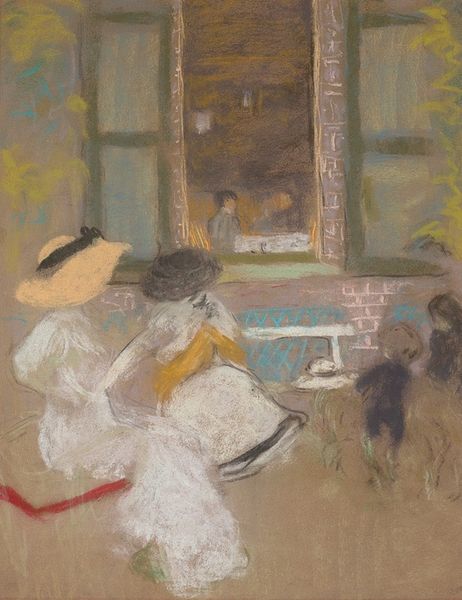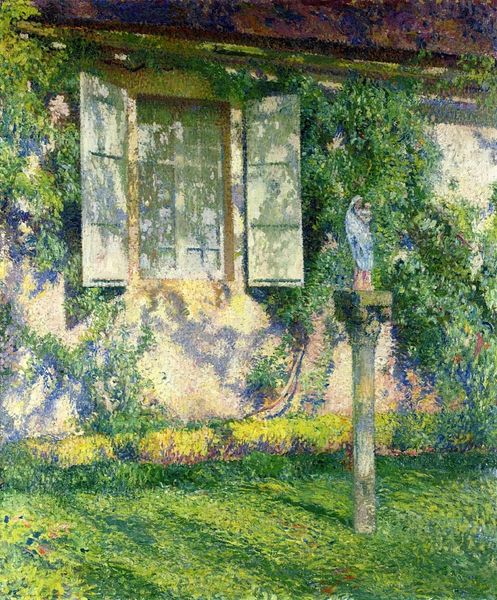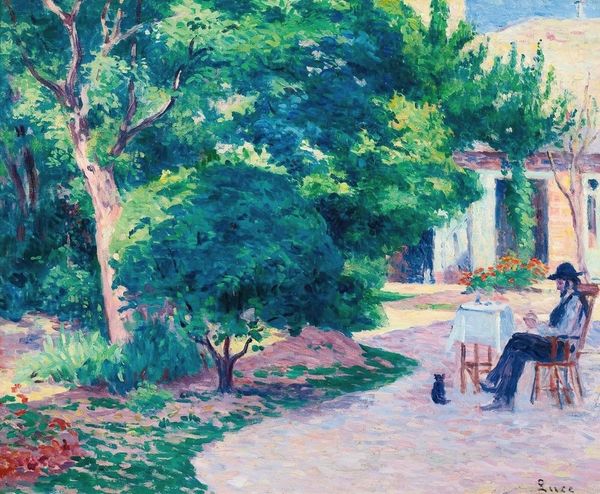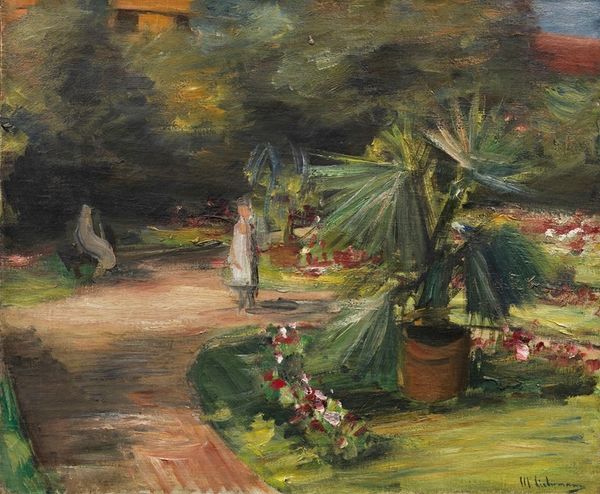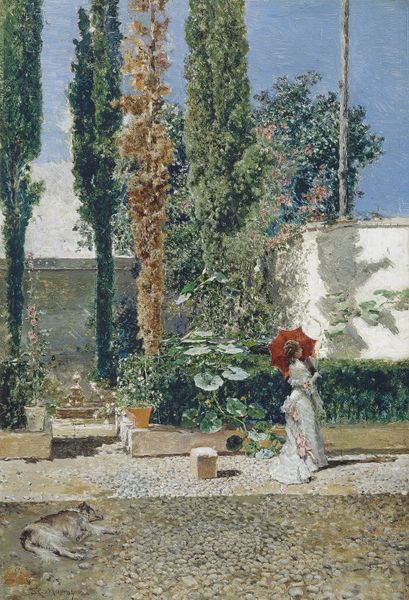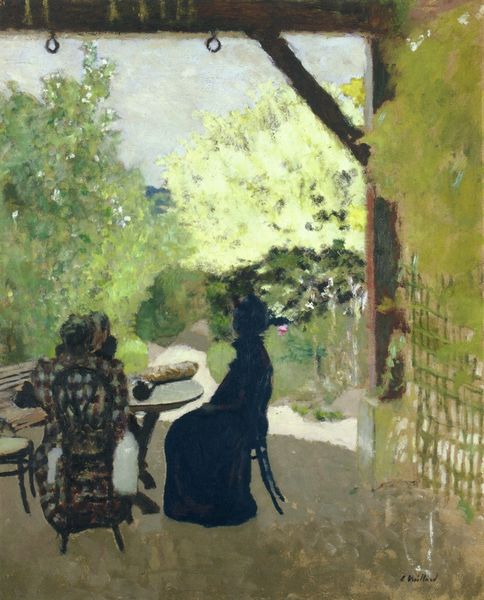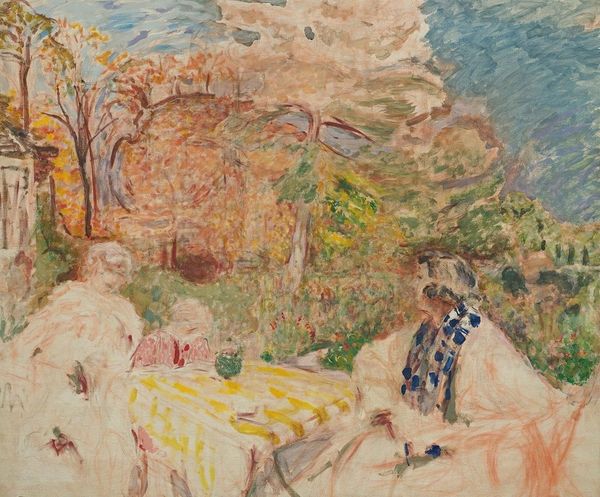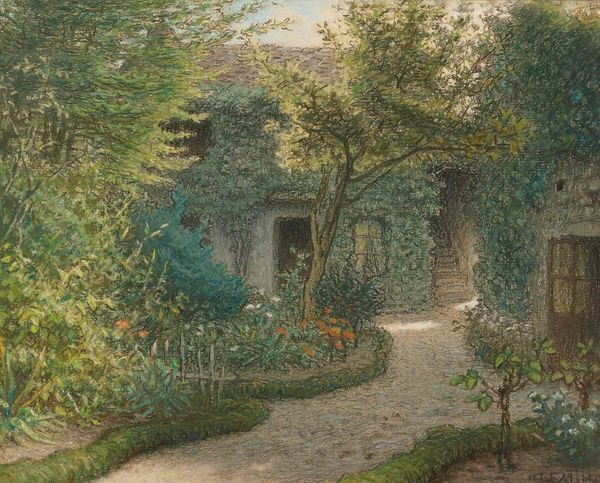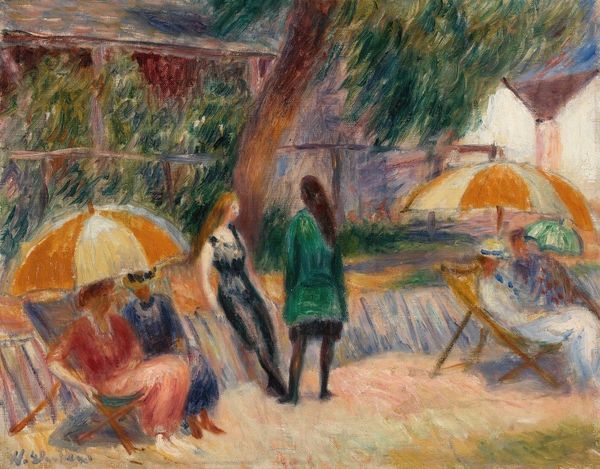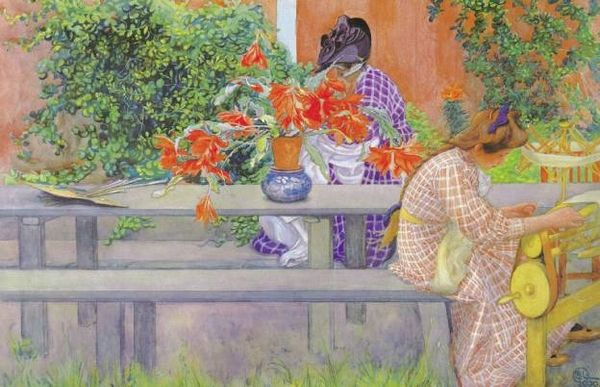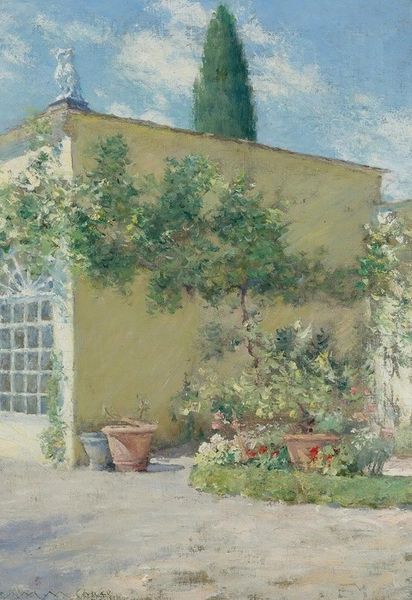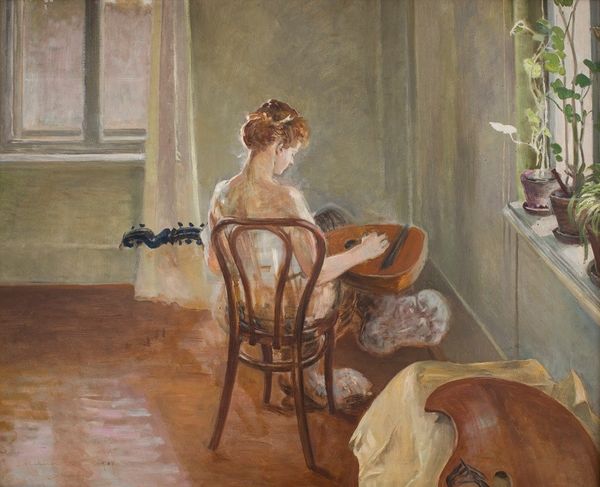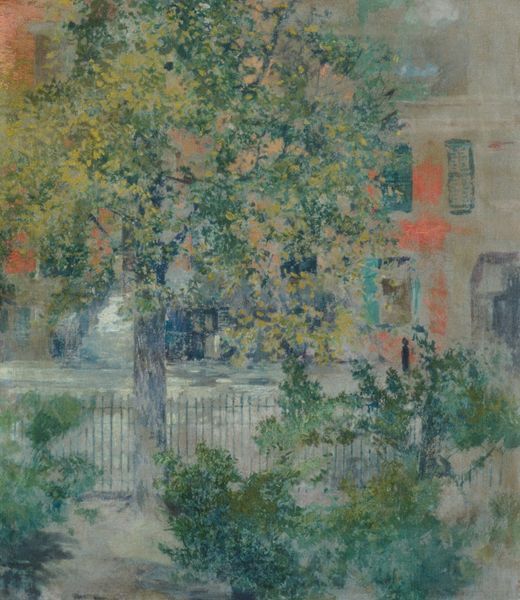
Lisbeth as the Evil Princess in the Fairy Tale ‘Fågel Blå’ by P.D.A. Atterbom 1900
0:00
0:00
plein-air, watercolor
#
portrait
#
water colours
#
narrative-art
#
plein-air
#
figuration
#
watercolor
#
coloured pencil
#
symbolism
#
watercolour illustration
#
genre-painting
#
mixed media
Copyright: Public Domain: Artvee
Curator: This is Carl Larsson’s "Lisbeth as the Evil Princess in the Fairy Tale ‘Fågel Blå’ by P.D.A. Atterbom", created around 1900. He used watercolour and colored pencil for this piece. Editor: Oh, my! What a fascinatingly strange staging! It has an ethereal quality to it, like a half-remembered dream in sunlight, but the dramatic figure seems a little... off, somehow, too theatrical for such a tranquil setting. Curator: Indeed, it's a portrait of his daughter enacting a scene. Look closer, and we can consider it a visual statement on performative roles and the construction of identity through artifice, touching on gender expectations in early 20th-century domesticity. The "evil princess" role provides an interesting counterpoint to conventional feminine ideals. Editor: Ah, it is theatrical! That makes so much more sense now! So there's a sort of tension there – the almost too bright hues of the chairs, like set pieces, offset against the seemingly spontaneous exuberance of nature all around and the children at the fence. She’s acting up for them. It has the flavor of one of our memories playing tricks. I love the awkward little audience peering through the fence—they look so genuinely delighted to be in the thick of it. Curator: Absolutely. The work invites us to question the power dynamics inherent in storytelling and performance. How does Lisbeth, embodying this villainous role, challenge societal norms and express agency within the confines of a patriarchal narrative? Editor: I tell you what; to me, it's a moment lifted right out of my childhood – playing dress-up, that heightened reality when imagination trumps everything else. I even get a bit jealous of the child audience looking through the fence—watching Lisbeth doing her very best villainess. What power! What drama! You almost forget, you know, who’s actually in control. Curator: And there, I think, is the real question that Larsson prompts. He gives the viewer a lens to consider not just the construction of the performance but also the gaze through which that performance is interpreted. Editor: This piece! My memory just coughed up some pretty strong associations with old fairytales, a touch of childhood play acting, a whiff of melancholy and nostalgia—that light is so delicious. Curator: Considering those echoes that are resonating, Carl Larsson, through this deceptively simple domestic scene, creates an intriguing, thought-provoking tableau that encourages us to really consider art, representation and our place within them.
Comments
No comments
Be the first to comment and join the conversation on the ultimate creative platform.
